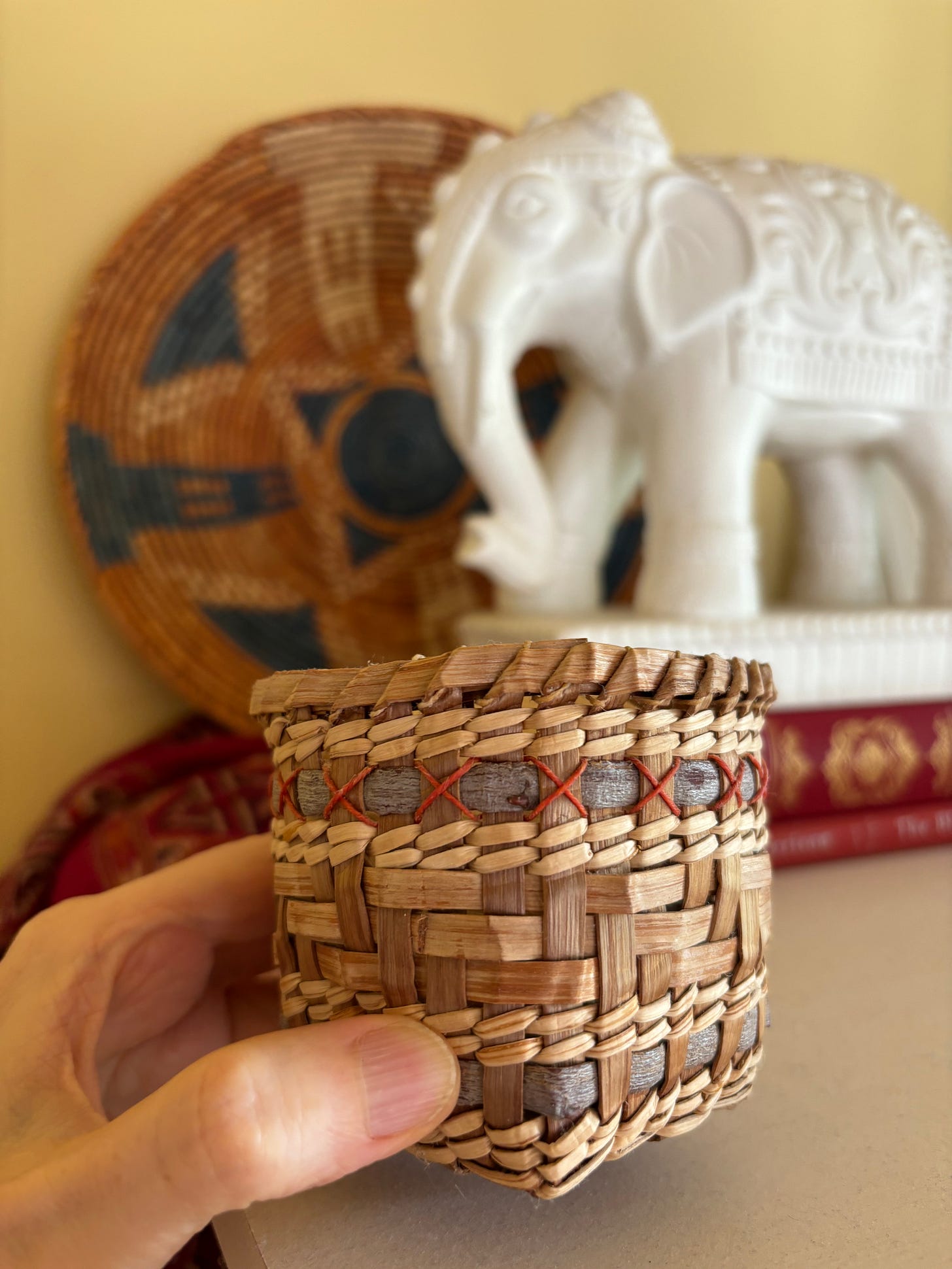Consider the word ‘heirloom,’ a compound word with its roots in both heredity and looming, suggesting that history is woven into the things we make. Certainly you have felt this in older objects or garments you’ve inherited, that they carry energy from the places and people who made them. And if they come from your own family, perhaps you can feel their stories, which are the prequels to your own story, living between their fibres. Indeed, this is why handmaking and singing our stories into the things we make is a way of keeping belonging alive.
To find stories embedded in handwork is not surprising, considering everything a person experiences is transmitted into what they create. The materials and tools they use also contain the traces of the place they are from, so the work can’t help but be storied, fathoms deep. In some cultures, this storying of objects is done consciously. The Shipibo, one of the many indigenous tribes in Peru, have recorded their songs (icaros) into elaborate embroidery, geometric designs that correlate directly with nature. The Indigenous Nations of Australia create songlines that are artworks, but also maps of their landscape. If even one generation is denied that inheritance, in cultures such as these, the way home will be lost.
While those of us who are the children of refugees and settlers may no longer have this symbiotic relationship with the land upon which we live, our history is still embedded in the things we make with our hands, which is why I consider handmaking to be a great competency of belonging.
The materials we chose, the teachers who imparted the craft to us, the necessity or beauty which called the creation forth, the style of music contained within its curves and lines—all of these elements live quietly in an object made by a person’s hands. And wearing, using, or living with handmade things allows the essence of a place or a lineage to be kept alive through us.
For centuries, the only tools and objects people used were made by hand, usually by someone from their own village, creating a reciprocal economy. In other words, by engaging a baker to make your daily bread, or a blacksmith to forge your knives, you are receiving an original creation—but you are also giving the makers a purpose in your village. With the advent of plastics and factory production, many of the traditional hand trades like shoemaking, forging, basketry, textile-weaving, and boat-making were suddenly facing extinction.
Though this means we have access to buying cheaper, more colourful products, it comes at an unseen cost. The disappearance of both human mastery and other-than-human resources happened very quickly over the last seventy years. We are seeing the extinction of innumerable hand trades from the absence of apprentices, who were unable to see a future in the dying ways and moved into urban centres to work for business instead. Contained within these losses are the cultural legacies of those places and its people.
When you learn to make things with your hands, you begin to awaken an awareness of the beauty and value of things in your life. Handmaking teaches us about slowness: the antidote to brevity and efficiency. It shows us, through the patience and skillfulness of our own hands, what goes into a thing.
When we put those long efforts into bringing beauty into the world, we are honouring that which made us by creating as we have been created. We are taught to respect the slow, attentive piecing together of the life we yearn for. Stitch by stitch, we apprentice the craft. We work in tandem with mystery, feeling its rhythms awaken in our bone-memory. As the hands work, the mind is stilled and a greater listening is engaged as we drop down into the deep rhythm of devotion, where the whole world is in communion. The ferns unfurl, the daffodils trumpet, the rosebuds fatten, and the song of creation can be heard.
Handwork also teaches us the patience required to make a life materialize. There are no shortcuts, and it can’t be done cheaply or en masse. The work is small, the work is slow, and all we can do is stay with it. As Dr. Clarissa Pinkola Estés says, “the shortcut, the easy way, always falls apart. Then one returns to the handmade life. One has to pick it up painfully, and piece it back together, holding the overall pattern in one’s mind, but working patiently, piece by piece.
Excerpt from “Belonging: Remembering Ourselves Home” by Toko-pa Turner (belongingbook.com)







Very much like your ode to the Maker. Thirty-five years a maker, (wood, ancient tools and techniques) it is part of my daily life, and the work is instilled with a spirit of the object. It also makes its way into my writing: https://open.substack.com/pub/daviddrayer/p/works-farm-store?r=28bk2b&utm_campaign=post&utm_medium=web So thanks for that.
Mmmmm this one!!! I am working on a piece about ai, slow art, and eros.... you are inspiring me more!!